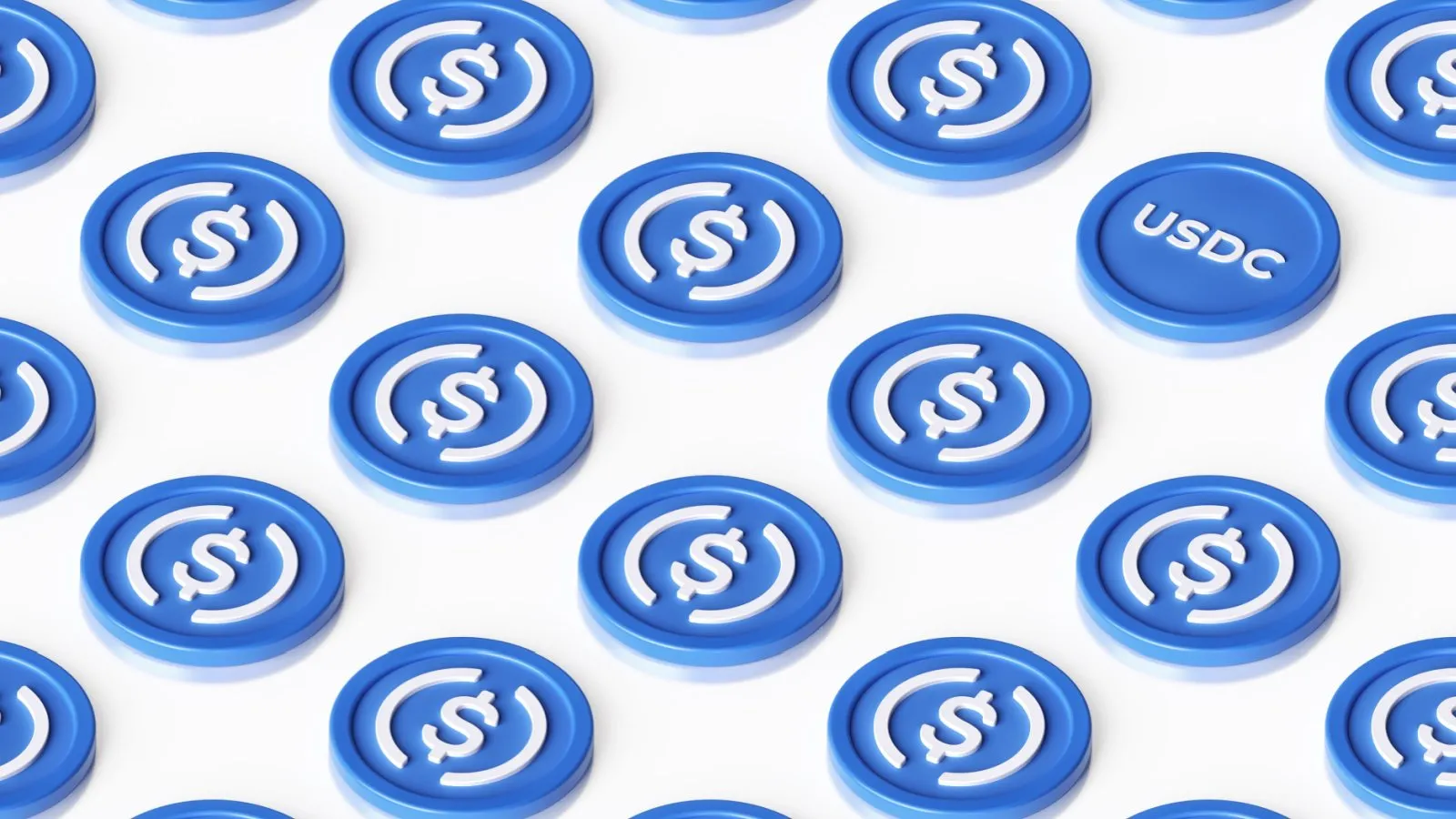Investors are cashing out their USD Coin (USDC) like never before.
Data from CoinGecko shows that the market cap of USDC has been steadily plunging and has hit a two-year low.
Right now, its market cap stands at $26.1 billion, making it the sixth largest digital asset. For most of last year it was comfortably the fourth-largest asset, behind Bitcoin, Ethereum, and its stablecoin competitor Tether. In fact, it came close to catching up with USDT in 2022. But that figure has been shrinking—and quickly—this year. When the banking crisis hit the U.S. earlier this year, Circle, the company behind the USDC, was one tech company that got hurt.
USDC is a stablecoin, considered the backbone of the crypto economy, such assets are pegged to a real life, stable asset—in this case, the U.S. dollar. That means there’s a dollar in reserve to back every USDC token in circulation.
But after the shuttering of Silicon Valley Bank (SVB) in March, Circle revealed that it had $3.3 billion of the cash reserves backing USDC at the bank. Its asset then “depegged”—or lost its steady value of 1:1 to the dollar.
Investors since then have struggled to regain confidence in the asset, experts told Decrypt. “USDC has been consistently losing market capitalization since the SVB issues in March 2023,” CryptoQuant head of research Julio Moreno said.
Pace of USDC outflows averaging $25 to $30 million a day over the last month pic.twitter.com/zgu9VHfMV2
— Sisyphus (@0xSisyphus) August 28, 2023
“Our interpretation is that USDC lost some trust from the market after this event,” he continued, adding that the largest burns of USDC this year mostly occurred in March after the SVB issues.
“Burns” refers to investors redeeming, or cashing out, the token for the dollars that back each one. Data from Circle shows that over $6.9 billion has been redeemed over the past 30 days compared to $6.1 billion issued.
USDC is a massive player in the digital asset industry: In the past 24 hours, over $4.5 billion in USDC has traded hands on exchanges, according to CoinGecko.
The cryptocurrency is important because traders can use it to quickly enter and exit trades without using a traditional bank or fiat currency. This is particularly useful in markets where dollars are restricted or unavailable, as well as in DeFi, the industry which aims to make things like borrowing and lending permissionless.
But people have lost interest in the DeFi sphere, according to one expert who spoke to Decrypt, adding the decrease in activity has hit USDC especially hard.
“USDC is used heavily in DeFi, and the DeFi space has also undergone a drop in activity, similar to centralized markets,” director of research at Kaiko Clara Medalie said.
She noted that it was “more unusual” that the market cap of Tether—the biggest stablecoin and third-largest digital asset—continues to rise. As of Friday, USDT has a market capitalization of $82.7 billion, up nearly 25% from the start of the year.
Other factors are at play too. Investors are less likely to sell USDC’s competitor Tether—which trades as USDT—than USDC. This is because USDC is largely used for non-volatile liquidity while USDT is collateral for perpetual trading, Wintermute CEO and founder Evgeny Gaevoy previously told Decrypt.
And Medalie added: “Stablecoins remain one of the more powerful use cases for blockchain technology.”
Just in June, German software giant SAP announced that it was using USDC to test cross-border payments. But even with big corporations testing USDC as a way to settle transactions, its slide has continued.
The asset’s supply dominance on Ethereum has slid from 45% earlier in 2023 to less than 33% now, data from Glassnode shows.
Meanwhile, America’s biggest cryptocurrency exchange Coinbase has made a big and bullish bet on the future of USDC. The San Francisco-based company said last week that it had acquired a minority stake in Circle and had dissolved Centre Consortium, which previously issued USDC.
Coinbase, which is currently experiencing low trading volumes, is using interest it earns on USDC reserves as a money maker.
The company told Decrypt that “Coinbase and Circle will continue to generate revenue from USDC reserves interest income.” Though with a falling market share, just how much of a money maker will it be?
Coinbase claimed that “broader distribution and usage of USDC” will help: The exchange announced that USDC would launch on six new blockchains through the end of October in what appears to be an attempt to grow adoption of the stablecoin.
And with seemingly rapid expansion in emerging markets—like Latin America—it would appear that the push for stablecoin retail use is more aggressive than ever.

